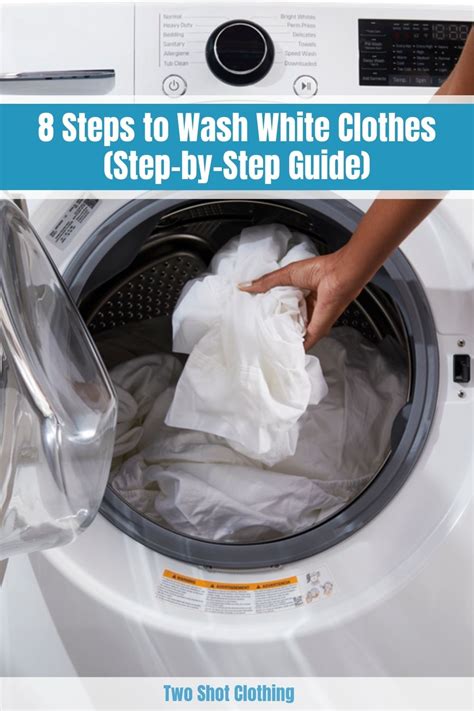How to Wash White Clothes: A Guide to Sparkling Clean Whites
Keeping your white clothes bright and fresh can feel like a constant battle against dingy discoloration and stubborn stains. But with the right techniques and a little know-how, you can easily win the war against dull whites and achieve that sparkling clean look you desire. This comprehensive guide will walk you through everything you need to know about washing white clothes effectively, from pre-treatment to drying.
Pre-Treatment: The Key to Stain Removal
Before tossing your whites into the washing machine, pre-treating stains is crucial. This step significantly improves your chances of removing even the most stubborn marks.
Identifying and Treating Different Stains:
- Grass Stains: Immediately blot (don't rub!) with cold water. Apply a stain remover specifically designed for grass, or a paste of baking soda and water. Let it sit for 15-30 minutes before washing.
- Blood Stains: Rinse with cold water (hot water sets the stain). Use a laundry stain remover or hydrogen peroxide (test on an inconspicuous area first).
- Ink Stains: Act quickly! Blot with rubbing alcohol or a specialized ink remover.
- Sweat Stains: These often require a bit more effort. Try soaking the garment in a solution of cold water and white vinegar before washing.
- Wine Stains: Blot immediately with a clean cloth, then sprinkle with salt to absorb the spill.
Choosing the Right Detergent and Water Temperature
The type of detergent you use plays a significant role in the success of your laundry efforts.
Detergent Selection:
- Opt for a detergent specifically formulated for whites. These detergents often contain bleaching agents to brighten and whiten fabrics.
- Consider using oxygen bleach. Oxygen bleach is a gentler alternative to chlorine bleach, effective at removing stains without damaging fabrics as much. However, always follow the product instructions carefully.
Water Temperature:
- Hot water is generally best for whites, especially heavily soiled items. Hot water helps to lift and remove dirt and grime more effectively. However, be mindful of the fabric's care instructions – some delicate fabrics may be damaged by hot water.
Washing Your Whites: Machine vs. Hand Washing
Most white clothes can be safely machine washed, but some delicate items might require a gentler approach.
Machine Washing:
- Sort your whites carefully. Separate them from colored clothing to prevent color transfer.
- Use the appropriate water level and cycle. A longer cycle with a higher water level is better for thoroughly cleaning heavily soiled items.
- Don't overload the machine. Overcrowding prevents proper cleaning and can even damage your clothes.
Hand Washing:
- Use cool or lukewarm water.
- Gently agitate the fabric. Avoid harsh scrubbing, which can damage delicate fibers.
- Rinse thoroughly to remove any remaining detergent residue.
Drying Your Whites: Preserving Brightness
The drying process is just as important as the washing process.
Avoiding Yellowing:
- Avoid direct sunlight. Direct sunlight can cause yellowing over time. Air-drying in the shade is best.
- Properly folding and storing clothes to avoid wrinkles and creasing will also help to keep the whites fresh and bright.
Maintaining the Brightness of Your White Clothes: Additional Tips
- Regular washing helps prevent stains from setting.
- Don't mix whites with colors.
- Consider using a white vinegar rinse, as this can help brighten and freshen whites.
- Check garment labels carefully before washing any item.
By following these steps, you'll be well on your way to achieving brilliantly white clothes that will look their best for longer. Remember, consistency is key! Regular attention to detail in pre-treatment, washing, and drying will yield the most impressive results.
